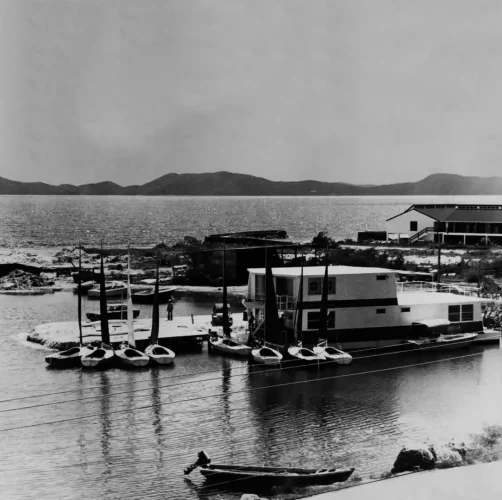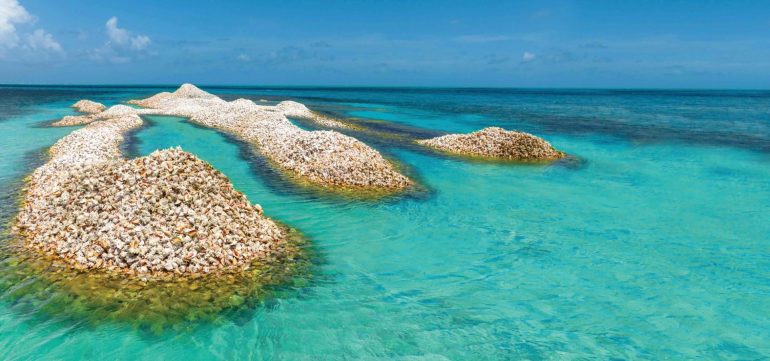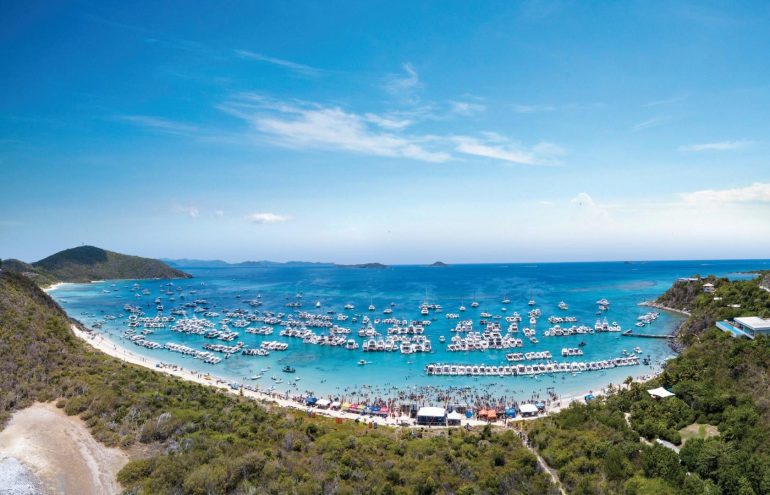BVI Inside Art Gallery
“A country without art is a country that has no history.”
—Carol Vanterpool
Vibrantly coloured and detailed with gingerbread-style ornamentation, the outside of the BVI Inside Art Gallery is one of the most photo-worthy, traditional-looking buildings on Main Street. But inside, the artwork is far from traditional.
A massive tableau filled with strokes and splashes of yellow, blue and green with dashes and dots of scarlet greeted me when I entered the front room. This is the type of artwork I’m more accustomed to seeing in boutique galleries in Brooklyn or Lille, not the BVI.
“There’s a conception of art in the BVI that it must be concrete,” artist and gallery owner Carol Vanterpool said. She mentions the paintings of palm trees, beaches and sunsets that you see in many Caribbean art galleries. “If we continue to give [visitors] the art that they like when they come to the Caribbean, I truly believe they’ll never respect that we have good artists,” she said. “I’m not criticizing artists who were here before me,” Ms. Vanterpool added, “I applaud their style. I can’t paint the way they do. I don’t have the patience to do it.” Still, I understood what she meant—many similar paintings in the region results in all art from the Caribbean being lumped together without recognition for individual artists.

One way to distinguish the BVI artists from those in other Caribbean nations is by having “a diversity of art,” Ms. Vanterpool said, then added that her goal is to educate BVI residents about abstract art, mainly because that’s the art she paints. “You have to bring a new perspective to the young people and the older people because there’s a lot of people here that were born here, grew up here, who don’t understand abstract art.” And she’s willing to take her time to educate people about abstract art in her gallery, including students from the local schools who have visited to see a different kind of art than what they’re accustomed to.
Ms. Vanterpool has been creating masterpieces since childhood. “We’d paint the calabash and the things that came off the coconut tree,” she told me. Later, she went to volunteer at the Smithsonian Institution in Washington, DC. “Everybody can’t go to Washington from here,” she said. “I can bring a little bit of what I learned on that side to this side. That’s why I have a gallery. Somebody has to give somebody that exposure.”
In addition to exposing BVI residents and visitors to abstract art, Ms. Vanterpool also embraces the concept that everything is art by turning practical items from her past into contemporary sculpture. She showed me a killie wang—a pyramid of stacked, alternating sticks held together with wire—and explained its original use. “We used to make these traps to catch birds, the mountain dove—the bird that’s the official bird of the BVI right now—we used to catch them when we were kids because we used to eat them,” Ms. Vanterpool said. “So now I’ve turned them into art, and I know people from the BVI all the way to Germany who collect them.” She mentioned being criticized for displaying the brightly painted killie wangs. “The first time I put them up as art, one of the local people asked me, ‘What you wanna bring that back for?’ I said, ‘So you wouldn’t forget who you are or where you come from.’ You gotta preserve your history. A lot of people don’t want to look back on yesterday, but how’re you going to get to tomorrow if you don’t remember what happened yesterday?”
Looking to tomorrow, Ms. Vanterpool hopes to secure funding for a project in which she’ll commission local artists to paint portraits of all the athletes participating in the 2012 Olympics in London. “I want to do a fundraiser here [at the gallery] for them,” she said and added, “We gotta cheer on our athletes.” The project would simultaneously promote BVI artists and BVI athletes, and Ms. Vanterpool would like to take the show to the BVI House in London after displaying the work in Road Town.
An Abstract Experience
I had to rush off after my interview with Carol Vanterpool, but for the next two days as I wrote the article, I’d felt that I’d missed the whole point of being in her gallery; I didn’t spend time with the work. I returned a few days later to fully experience the abstract art that she has assembled.
First, I approached the piece that had attracted me on my initial trip. The colours completely aligned with my tastes and seemed plucked from my closet—matte black, dusty brown, creamy ivory and mossy green with a few dashes of red and yellow. The piece also seemed to move—especially two strokes of ivory that flashed a hook across a dull brown background. My brain connected the hook to a column of ivory next to it and turned the grouping into an abstract jug at first, but then I clearly saw the ivory as smoke, the flecks of red and yellow below it were sparks and flames, the black beside it was the night sky, the green below it was grass and the brown beyond it was the space illuminated by the fire. It was an abstract painting of a bonfire. I instantly cursed my brain at making the associations it had made. My intention hadn’t been to discern what I was looking at; I’ve never seen abstract art as a puzzle that must be solved. Rather, I prefer abstractions that encourage introspection, and while the piece still attracted me, I became disappointed that I’d determined what the artist had painted. I even tried to “un-see” the bonfire, but I couldn’t convince my brain that it could be anything else. It was a somber, erratic, empirical interpretation of a bonfire, but it was still a bonfire. I had to move on to another piece.

Next to the first painting were hung three parallel oblong canvases, a triptych. Each panel had autonomy and traits the others did not share, but the three were still clearly related with elements connecting them—like siblings. So I instantly thought of my two sisters and me. And smiled. That, to me, is one of the most amazing things that art can do—elicit love. I could easily identify which sister fit with each panel and why, and I became comforted at having visions of my sisters in the room with me. This is what abstract art does when it’s at its most effective—it unlocks emotions inside each viewer that the artist never could’ve imagined when she painted the piece. It is infinite.
Hours vary during the off-season, but starting in October, the gallery will be open from 10am to 5pm, Monday through Friday and alternating Saturdays and Sundays. Hours also depend on the cruise ship schedule. For more information, call 284.544.0213.





